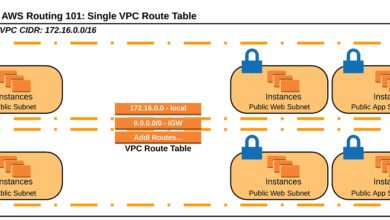AWS Certified Cloud Practitioner: 7 Ultimate Power Tips to Dominate the Exam
Thinking about launching your cloud career? The AWS Certified Cloud Practitioner is your golden ticket. It’s the perfect starting point—simple, respected, and packed with value. Let’s dive into everything you need to know to pass with confidence.
What Is the AWS Certified Cloud Practitioner?

The AWS Certified Cloud Practitioner is Amazon Web Services’ entry-level certification designed for individuals who want to demonstrate a solid understanding of the AWS Cloud. It’s ideal for non-technical roles, sales professionals, managers, and aspiring cloud engineers who want to validate their foundational knowledge.
Who Should Take This Certification?
This certification isn’t just for developers or system administrators. It’s tailored for a broad audience:
- Business analysts who need to understand cloud cost models
- Project managers overseeing cloud migration projects
- Sales and support staff working with AWS-based solutions
- Students and career switchers exploring cloud computing
According to AWS’s official certification page, this credential confirms your ability to articulate the benefits of the AWS platform and understand core services, security, and pricing.
Prerequisites and Exam Requirements
One of the best things about the AWS Certified Cloud Practitioner exam (CLF-C02) is that there are no mandatory prerequisites. However, AWS recommends at least six months of exposure to AWS cloud concepts. This can include hands-on experience, online courses, or self-study.
The exam consists of 65 multiple-choice and multiple-response questions, with a time limit of 90 minutes. You’ll need a passing score of 700 out of 1000. More details on the exam structure can be found at AWS Exam Guide.
“The Cloud Practitioner certification is the foundation of the AWS Certification path. It’s where every cloud journey should begin.” — AWS Training and Certification Team
Why Earn the AWS Certified Cloud Practitioner Credential?
Earning the AWS Certified Cloud Practitioner title isn’t just about adding a badge to your LinkedIn profile. It’s a strategic career move with tangible benefits.
Boost Your Career Prospects
In today’s tech-driven job market, cloud skills are in high demand. According to a 2023 report by Burning Glass Technologies, cloud-related jobs grow 2.5 times faster than traditional IT roles. Holding an AWS certification can make your resume stand out, even if you’re not in a technical role.
Recruiters often use certifications as a quick filter. Being an AWS Certified Cloud Practitioner signals that you understand cloud fundamentals, which can open doors to roles in project management, cloud sales, technical support, and more.
Gain Foundational Knowledge for Advanced Certifications
If you’re planning to pursue more advanced AWS certifications—like Solutions Architect, Developer, or DevOps Engineer—the Cloud Practitioner exam is the perfect warm-up. It covers the core concepts you’ll need to master before diving into complex topics.
Think of it as building a strong foundation before constructing a skyscraper. Without it, you risk gaps in understanding that could slow you down later.
Improve Business Decision-Making
For non-technical professionals, understanding AWS fundamentals helps in making informed business decisions. Whether you’re evaluating cloud migration costs, negotiating with vendors, or explaining cloud benefits to stakeholders, this certification gives you the language and insight to contribute meaningfully.
Managers with cloud literacy are better equipped to lead digital transformation initiatives and align technology with business goals.
Exam Structure and Domains Breakdown
To succeed in the AWS Certified Cloud Practitioner exam, you need to understand its structure and weightage. The exam is divided into four domains, each testing a different aspect of cloud knowledge.
Domain 1: Cloud Concepts (26%)
This section evaluates your understanding of fundamental cloud principles. Key topics include:
- Defining the cloud and its characteristics (on-demand, scalability, elasticity)
- Understanding the benefits of cloud computing (cost savings, global reach, agility)
- Differentiating between cloud models: public, private, hybrid
- Explaining the shared responsibility model
You should be able to articulate how the cloud differs from traditional on-premises infrastructure and why organizations are moving to AWS.
Domain 2: Security and Compliance (25%)
Security is a top concern for any organization adopting the cloud. This domain tests your knowledge of AWS security best practices and compliance frameworks.
Key areas include:
- Understanding AWS Identity and Access Management (IAM)
- Recognizing the role of encryption (in transit and at rest)
- Familiarity with AWS compliance programs (GDPR, HIPAA, SOC)
- Knowing how AWS handles physical security and data protection
It’s important to grasp the shared responsibility model: AWS manages security *of* the cloud, while customers manage security *in* the cloud.
Domain 3: Technology (33%)
This is the largest domain and focuses on AWS services and architecture. You’ll need to understand the purpose and use cases of core services.
Key services include:
- Amazon EC2 (Elastic Compute Cloud) for virtual servers
- Amazon S3 (Simple Storage Service) for object storage
- Amazon VPC (Virtual Private Cloud) for network isolation
- Amazon RDS (Relational Database Service) for managed databases
- AWS Lambda for serverless computing
You don’t need to know how to configure these services in depth, but you should understand their basic functionality and when to use them.
Domain 4: Billing, Pricing, and Support (16%)
This domain tests your ability to understand AWS pricing models and support options. Topics include:
- Understanding the AWS Free Tier and its limitations
- Comparing pricing models: On-Demand, Reserved Instances, Spot Instances
- Using the AWS Pricing Calculator and Total Cost of Ownership (TCO) Calculator
- Knowing the differences between AWS Support plans (Basic, Developer, Business, Enterprise)
Being able to estimate costs and choose the right support plan is crucial for real-world cloud adoption.
How to Prepare for the AWS Certified Cloud Practitioner Exam
Preparation is key to passing any certification exam. The good news? With the right strategy, you can pass the AWS Certified Cloud Practitioner exam in as little as 4–6 weeks.
Create a Study Plan
Start by setting a realistic exam date—ideally 4 to 6 weeks out. Break down your study time into manageable chunks. For example:
- Week 1: Cloud Concepts and AWS Overview
- Week 2: Security and Compliance
- Week 3: Core AWS Services (EC2, S3, VPC, etc.)
- Week 4: Billing, Pricing, and Support
- Week 5: Practice Exams and Review Weak Areas
- Week 6: Final Review and Exam Day
Use a calendar or study tracker to stay on schedule. Consistency beats cramming.
Leverage Free and Paid Learning Resources
AWS offers a wealth of free resources to help you prepare. Start with the AWS Training and Certification portal, which includes digital training, exam guides, and sample questions.
Popular third-party platforms include:
- A Cloud Guru: Offers hands-on labs and practice exams
- Udemy: Look for top-rated courses by Stephane Maarek or Neal Davis
- LinkedIn Learning: Structured paths with video tutorials
Don’t forget the AWS Whitepapers, especially “Overview of Amazon Web Services” and “Security Best Practices in the AWS Cloud.” These are essential reading.
Gain Hands-On Experience
No amount of theory can replace real-world experience. Sign up for the AWS Free Tier and spend time exploring the AWS Management Console.
Try these beginner-friendly tasks:
- Create an S3 bucket and upload a file
- Launch a free-tier EC2 instance and connect via SSH
- Set up an IAM user with limited permissions
- Explore the AWS Billing Dashboard
Hands-on practice helps solidify concepts and builds confidence.
Top 7 Tips to Pass the AWS Certified Cloud Practitioner Exam
Want to dominate the exam? Here are seven proven strategies used by successful candidates.
1. Master the AWS Shared Responsibility Model
This is one of the most frequently tested concepts. Understand that AWS is responsible for the security *of* the cloud (hardware, infrastructure, region availability), while you are responsible for security *in* the cloud (data, applications, IAM policies).
For example, AWS ensures the physical security of data centers, but you must encrypt your data and manage user access.
2. Know the Core AWS Services Inside Out
You don’t need to be an expert, but you must understand the purpose of key services:
- Amazon S3: Scalable object storage, ideal for backups and static websites
- Amazon EC2: Virtual servers in the cloud
- AWS Lambda: Run code without provisioning servers (serverless)
- Amazon RDS: Managed relational databases
- Amazon VPC: Isolated network environment in AWS
Focus on use cases, not configuration details.
3. Understand AWS Pricing and Cost Management Tools
The exam loves to test your knowledge of cost-saving strategies. Be familiar with:
- Reserved Instances: Up to 75% savings for long-term usage
- Spot Instances: Bid for unused EC2 capacity at steep discounts
- Free Tier: 12 months of free usage for many services
- Cost Explorer: Visualize and manage AWS spending
Know when to use each model and how to estimate costs using the AWS Pricing Calculator.
4. Practice with Realistic Sample Questions
Practice exams are critical. They help you get used to the question format and identify knowledge gaps.
Recommended sources:
- AWS Official Practice Exam ($20)
- A Cloud Guru and Whizlabs practice tests
- Udemy courses with built-in quizzes
Take at least 3–5 full-length practice exams before the real thing.
5. Focus on the Exam Domains and Weighting
Don’t waste time on low-weight topics. Since Technology (33%) and Security (25%) make up nearly 60% of the exam, prioritize them.
Use the official CLF-C02 Exam Guide to align your study plan with domain percentages.
6. Eliminate Wrong Answers First
Many questions are multiple-choice with more than one correct answer. Use the process of elimination:
- Rule out obviously wrong answers
- Look for keywords like “MOST secure,” “LEAST expensive,” or “BEST practice”
- Remember that AWS favors automated, scalable, and secure solutions
This strategy increases your chances of selecting the right answer, even if you’re unsure.
7. Stay Calm and Manage Your Time
You have 90 minutes for 65 questions—about 1.4 minutes per question. Don’t rush, but keep an eye on the clock.
If you’re stuck on a question, mark it and move on. You can return later. Most test-takers finish with time to spare, so use it wisely to review flagged questions.
Common Mistakes to Avoid as an AWS Certified Cloud Practitioner Candidate
Even smart candidates fail due to avoidable errors. Here’s how to stay on track.
Mistake 1: Over-Engineering Solutions
The exam often presents scenarios where the simplest solution is the correct one. Don’t assume you need complex architectures. For example, if a question asks to store static website files, the answer is likely Amazon S3—not EC2 with a web server.
Remember: AWS promotes simplicity, scalability, and cost-efficiency.
Mistake 2: Ignoring the Free Tier and Cost-Saving Options
Many questions test your ability to recommend cost-effective solutions. Always consider the Free Tier, Reserved Instances, or serverless options like Lambda before suggesting full-blown EC2 instances.
For example, if a startup needs a backend API, AWS Lambda + API Gateway is cheaper and more scalable than running EC2 servers 24/7.
Mistake 3: Confusing AWS Services
It’s easy to mix up services like S3, EBS, and EFS. Remember:
- S3: Object storage, durable, globally accessible
- EBS: Block storage for EC2 instances (like a hard drive)
- EFS: File storage for multiple EC2 instances (like a network drive)
Practice with diagrams and flashcards to reinforce these distinctions.
What Comes After the AWS Certified Cloud Practitioner?
Congratulations—you’ve earned your certification! But your cloud journey is just beginning.
Pursue Associate-Level Certifications
The next logical step is one of AWS’s Associate-level certifications:
- AWS Certified Solutions Architect – Associate: Design scalable, secure applications on AWS
- AWS Certified Developer – Associate: Build and deploy cloud applications
- AWS Certified SysOps Administrator – Associate: Manage and operate AWS environments
Each of these builds on the knowledge you gained as an AWS Certified Cloud Practitioner.
Join the AWS Community
Stay engaged by joining AWS user groups, attending AWS re:Invent, or participating in forums like the AWS re:Post community. Networking with other professionals can lead to job opportunities and mentorship.
Apply Your Knowledge in Real Projects
Whether it’s automating personal workflows, building a portfolio project, or contributing to open-source cloud tools, applying your skills reinforces learning and boosts your resume.
Consider volunteering for cloud migration tasks at work or launching a side project on AWS.
What is the AWS Certified Cloud Practitioner exam?
The AWS Certified Cloud Practitioner exam (CLF-C02) is an entry-level certification that validates foundational knowledge of AWS Cloud services, including core concepts, security, technology, and billing. It’s designed for non-technical and technical roles alike.
How long should I study for the AWS Certified Cloud Practitioner?
Most candidates study for 4 to 6 weeks with 5–10 hours of study per week. If you have prior cloud experience, you may need less time. Beginners should allocate more time for hands-on practice.
Is the AWS Certified Cloud Practitioner worth it?
Yes. It’s one of the most recognized entry-level cloud certifications. It boosts your resume, helps you understand cloud fundamentals, and serves as a stepping stone to advanced AWS certifications.
Can I take the AWS Certified Cloud Practitioner exam online?
Yes. AWS partners with Pearson VUE to offer online proctored exams. You can schedule your exam from home or office, provided you meet the technical and environmental requirements.
What score do I need to pass the AWS Certified Cloud Practitioner exam?
You need a scaled score of 700 out of 1000 to pass. The exam includes 65 questions, and you have 90 minutes to complete it.
Passing the AWS Certified Cloud Practitioner exam is a smart career move. It validates your cloud knowledge, opens doors to new opportunities, and sets the stage for advanced AWS certifications. With the right preparation—understanding the domains, using quality resources, and practicing with realistic questions—you can pass with confidence. Whether you’re a beginner or a professional looking to validate your skills, this certification is a powerful first step into the world of cloud computing.
aws certified cloud practitioner – Aws certified cloud practitioner menjadi aspek penting yang dibahas di sini.
Further Reading:









